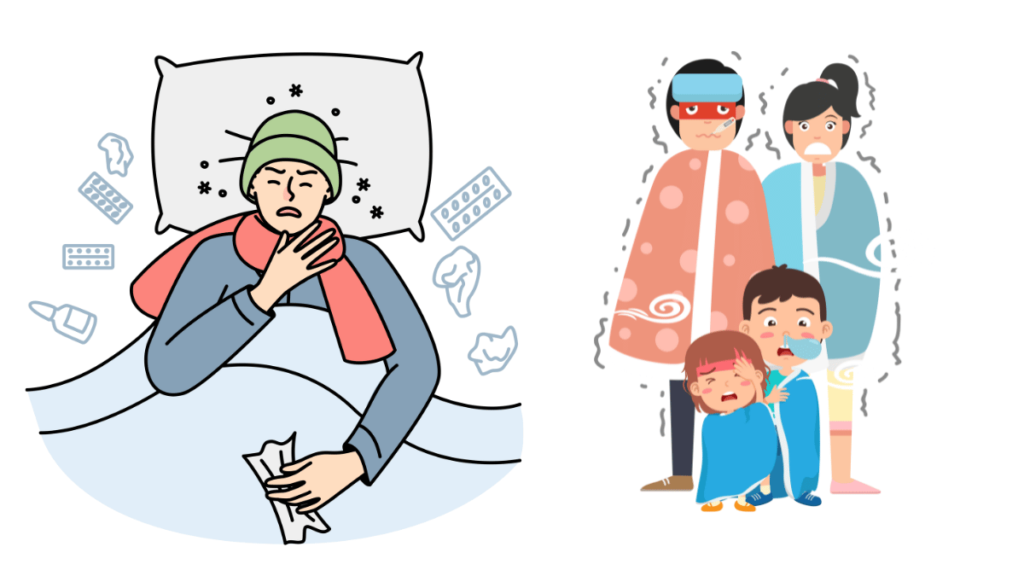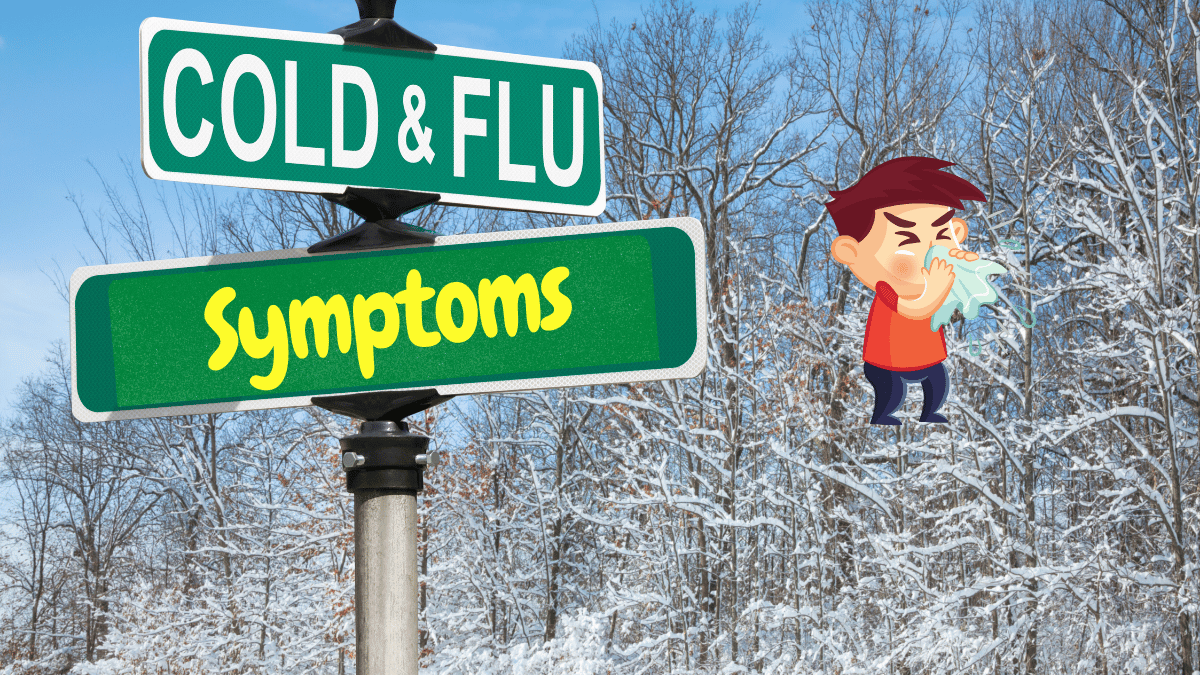Understanding the Cold Cold and Flu Symptoms
What is a Common Cold?
The common cold is a viral infection of the upper respiratory tract, primarily caused by rhinoviruses, but other viruses can also be responsible.
It spreads easily from person to person, often through respiratory droplets when an infected person coughs or sneezes, or by touching contaminated surfaces and then touching the face
. While it can affect anyone, colds are more frequent in children and can occur throughout the year, peaking in the fall and winter months.
Symptoms of a Common Cold
Common cold symptoms can vary but typically include:
- Runny or stuffy nose: frequently accompanied by sneezing.
- Sore throat: A scratchy or irritated feeling in the throat.
- Cough: Can be dry or productive.
- Mild headache: Often due to sinus pressure.
- Fatigue: Much feelings of tiredness or lethargy.
- Mild fever: most of time it is common in children than adults.
Symptoms usually develop gradually and are generally mild compared to other respiratory illnesses.
Duration and Severity of Cold Symptoms
Cold symptoms typically last about 7 to 10 days. The first few days are often the most severe, with symptoms gradually improving.
While some symptoms, like a cough or nasal congestion, may linger for a couple of weeks, most people recover fully without complications.
It’s important to note that while the common cold is usually mild, it can lead to more serious conditions in some individuals, particularly those with weakened immune systems or pre-existing health issues.
Understanding the Flu (Influenza)
What is the Flu?
Influenza, is a also know as the flu, is a contagious viral infection that affects the respiratory system. It is caused by influenza viruses, which can be categorized into several types, with influenza A and B being the most common in seasonal outbreaks.
The flu spreads easily through respiratory droplets when an infected person coughs, sneezes, or talks, and it can also spread by touching contaminated surfaces. Unlike the common cold, the flu can lead to more severe health complications and is a significant cause of illness and hospitalization each year.
Symptoms of the Flu

Flu symptoms typically appear suddenly and can include:
- High fever: Often over 100°F (37.8°C).
- Chills: Accompanying fever and a feeling of coldness.
- Muscle aches: Generalized pain in the body.
- Fatigue: heavy tiredness that can last for weeks.
- Cough: Usually dry and persistent.
- Sore throat: Can be severe and uncomfortable.
- Headache: Often intense.
- Runny or stuffy nose: Similar to cold symptoms but can be more severe.
Flu symptoms can vary in intensity but are generally more pronounced than those of a common cold.
Duration and Severity of Flu Symptoms
Flu symptoms typically last from 5 to 10 days, with the most intense symptoms occurring in the first few days. While many people begin to feel better after a week, fatigue and cough can linger for several weeks. The severity of flu symptoms can vary greatly, with some individuals experiencing mild illness while others may develop serious complications, such as pneumonia or exacerbations of chronic conditions. Vaccination is recommended as a preventive measure, especially for high-risk groups.
Key Differences Between Cold and Flu Symptoms
Symptom Comparison Table
| Symptom | Common Cold | Flu |
|---|---|---|
| Fever | Rare (usually low-grade) | Common (often high-grade) |
| Chills | Rare | Common |
| Muscle Aches | Mild | Severe |
| Fatigue | Mild to moderate | Severe |
| Cough | Mild to moderate | Dry and persistent |
| Sore Throat | Common | Common |
| Runny/Stuffy Nose | Common | Less common |
| Headache | Rare | Common |
Onset and Duration of Symptoms
- Cold: Symptoms typically develop gradually over a few days. Duration is usually 7 to 10 days, with mild symptoms that can persist longer.
- Flu: Symptoms usually appear suddenly and are more intense. The duration is generally 5 to 10 days, but severe fatigue and cough can last longer.
How to Distinguish Between Cold and Flu
To differentiate between a cold and the flu, consider the following:
- Symptom Intensity: Flu symptoms are generally more severe, especially fever, body aches, and fatigue.
- Onset: The flu often starts abruptly, while a cold develops more gradually.
- Fever: A high fever is more characteristic of the flu, while colds rarely cause fever.
- Duration: Colds tend to linger with mild symptoms, while flu symptoms may peak and then improve within a week.
If you’re unsure or if symptoms are severe, consult a healthcare professional for an accurate diagnosis and appropriate care.
Remedies for Cold Symptoms
Home Remedies for Colds
Staying hydrated is essential, so drinking plenty of fluids like water, herbal teas, and broths can help thin mucus. Getting adequate rest supports your immune system in fighting off the virus.
Gargling with warm salt water can soothe a sore throat, while mixing honey with warm water and lemon offers relief for cough and throat irritation. Inhaling steam can also be beneficial for relieving nasal congestion.
Over-the-Counter Medications for Colds
For over-the-counter options, decongestants can relieve nasal congestion, and antihistamines are effective for reducing a runny nose and sneezing.
Pain relievers such as acetaminophen or ibuprofen can alleviate headaches and body aches, and cough syrups can help suppress coughing or loosen mucus.
Prevention Tips for Colds

To prevent colds, wash your hands regularly to reduce the spread of germs and avoid close contact with sick individuals. Maintaining a healthy diet supports your immune system, while adequate sleep is essential for overall health.
Staying active through regular exercise can also help strengthen your immune response.
Remedies for Flu Symptoms
Home Remedies for the Flu
When dealing with the flu, hydration remains a priority. Drinking fluids such as water, herbal teas, and electrolyte drinks can help prevent dehydration. Resting is crucial for recovery, and a warm compress can relieve sinus pressure and aches.
Ginger tea is a soothing option that can help alleviate nausea and boost immunity, while chicken soup provides comfort and may ease symptoms.
Over-the-Counter Medications for the Flu
For the flu, antiviral medications like oseltamivir (Tamiflu) can be effective if taken early. Pain relievers, such as acetaminophen or ibuprofen, can help reduce fever and alleviate body aches.
Decongestants can provide relief from nasal congestion, and cough medications can assist in managing a persistent cough.
When to See a Doctor for Flu Symptoms
It’s important to seek medical attention if you experience difficulty breathing, persistent high fever over 102°F (39°C), or severe symptoms like intense body aches. If you have underlying health conditions, consulting a doctor is advisable as well.
Conclusion
In conclusion, understanding the key differences between cold and flu symptoms is essential for effective self-care and treatment. While both illnesses share common signs like cough and fatigue, flu symptoms are typically more severe and can include high fever and body aches.
Recognizing these differences can help you seek appropriate remedies—whether it’s rest and hydration for a cold or antiviral medications for the flu. By taking proactive steps and listening to your body, you can better manage your symptoms and promote a quicker recovery.
Always consult a healthcare professional if symptoms worsen or persist, ensuring you receive the right care tailored to your needs.
FAQ
What are the key differences between cold and flu symptoms?
Colds typically cause milder symptoms like a runny nose and sore throat, while flu symptoms are more severe, including high fever, body aches, and fatigue.
How can I tell if I have a cold or the flu?
If symptoms appear gradually and are mild, it’s likely a cold; if they come on suddenly and are more intense, it’s probably the flu.
What are the main symptoms of a cold?
Common cold symptoms include a runny or stuffy nose, sneezing, sore throat, and mild cough.
What are the main symptoms of the flu?
Flu symptoms often include high fever, chills, body aches, fatigue, headache, and dry cough.



